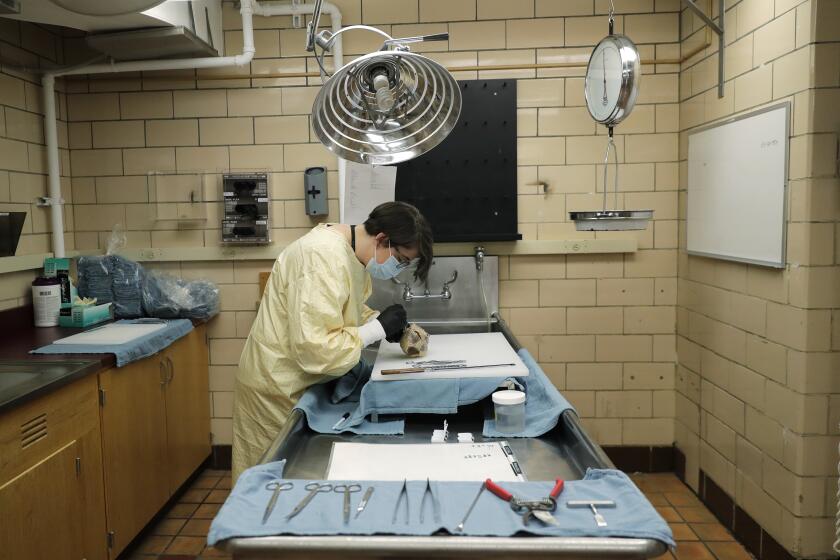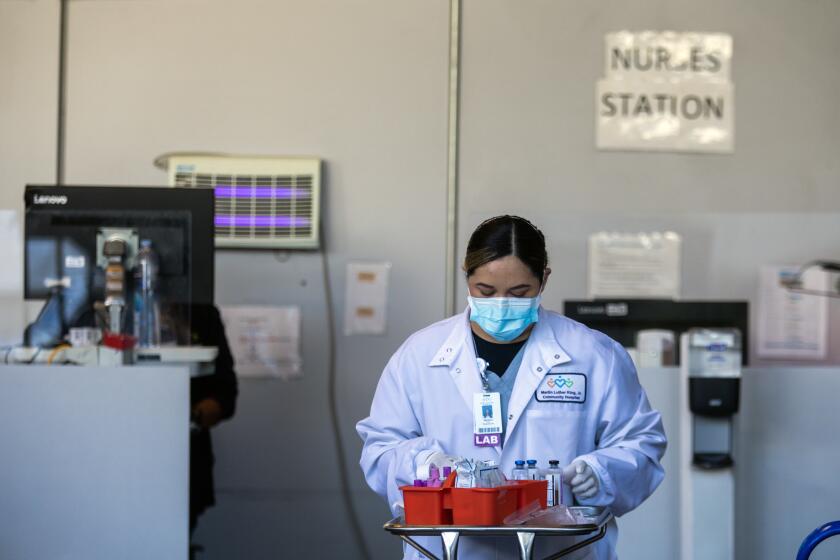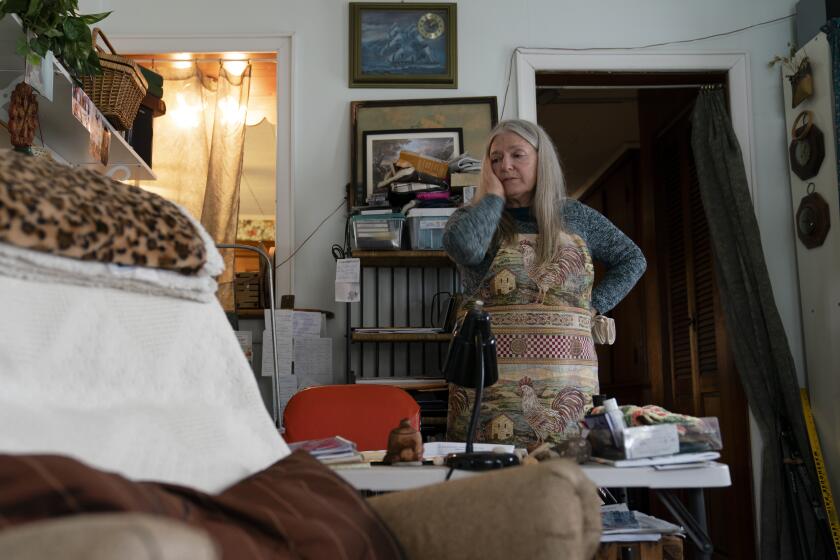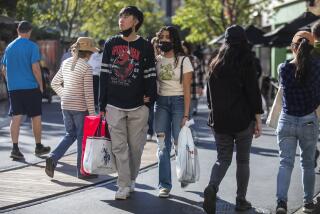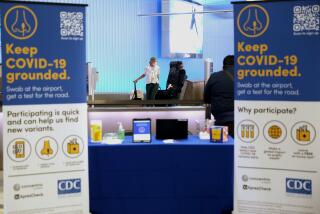Fatigue, cough and brain fog. For many in L.A. County, long COVID limited daily life

Most Los Angeles County residents who have been afflicted with long COVID reported experiencing symptoms severe enough to limit their daily activities for more than four weeks after they became infected, according to a recent survey.
The results shed light on the prevalence of the still-little-understood syndrome — as well as the continued risk posed by the coronavirus even as the number of new cases declines.
“This data shows us that, for some people, the impacts of COVID can last much longer than the initial acute infection,” said L.A. County Public Health Director Barbara Ferrer.
As part of a survey conducted by USC’s COVID-19 Pandemic Research Center in collaboration with the county health department, residents were asked whether they had experienced any of an array of symptoms lasting more than four weeks after their original COVID-19 infection.
Scientists are exploring whether some of the most infectious coronavirus variants came from chronically infected individuals with weakened immune systems.
Of the 675 individuals who responded to that question in January and February, 54% said they’d had at least one, according to findings Ferrer presented during a briefing late last month.
The most commonly reported symptoms were extreme tiredness or fatigue, brain fog and persistent cough. Other maladies included depression or anxiety, body aches, difficulty sleeping, headaches, joint pain, difficulty breathing and loss of taste or smell.
Among the self-reported long haulers, 77% said their symptoms to some degree limited their typical daily activities, such as going to work or school, taking care of their personal needs or socializing with others. One-quarter of them said they experienced “significant limitations.”
“Most people with long COVID slowly begin to improve. However, there are also people who have had long COVID for many months, or even years, sometimes resulting in a disability,” Ferrer said.
Survey respondents were randomly sampled and weighted to represent county demographics, according to the Department of Public Health.
Among the changes announced by the California Department of Public Health will be the end of the statewide mask mandate in healthcare and other indoor high-risk settings — including correctional facilities and homeless shelters — beginning April 3.
The precise prevalence of long COVID is still a matter of study and debate. Survey data gathered by the national Centers for Disease Control and Prevention and the Census Bureau suggest 27.4% of adults nationwide who had COVID-19 — and 14.7% of adults overall — contend with symptoms lasting three months or longer.
As for the difference in symptom lengths between the L.A. County and federal surveys, Ferrer said “neither is right or wrong. They’re both capturing a different sort of group of people that would be eligible to give us information about their experiences.”
In either case, the repercussions can be severe. A study released by the CDC in December found that long COVID was implicated in more than 3,500 deaths nationwide between January 2020 and June 2022.
“This is a serious issue that is the enduring part of the pandemic,” said Dr. Eric Topol, director of the Scripps Research Translational Institute in La Jolla. “We have no definitive treatment for any component of long COVID, of which there are multiple.”
A new research initiative will explore whether the persistence of coronavirus in the body plays a role in the development of long COVID.
During a recent discussion with Dr. Robert Wachter, chair of UC San Francisco’s Department of Medicine, Topol said, “We’ve left these people in the lurch. We haven’t come up with anything to help treat them.”
“It’s a serious matter because we have around the world tens of millions of people who are suffering,” he added.
Researchers have suggested several possible root causes of long COVID. One theory is that viral reservoirs might linger in the body months or even years after an infection has cleared.
Others include the possibility that some infections lead to blood-clotting issues that damage the circulatory system; that the coronavirus might destroy key tissues during the acute stage of an infection, leading to longer-lasting illness; and that the virus triggers an overactive immune response that results in harmful inflammation or prompts certain antibodies to attack a patient’s own cells.
Though Ferrer said, “No one’s immune to long COVID, even if you’re healthy and even if your infection is mild,” there are some factors that might make someone more likely to develop enduring symptoms.
Mild cases of COVID-19 can cause patients to suffer long COVID symptoms, and a new study finds that some of those symptoms can linger for more than a year.
Those at greater risk include individuals who were unvaccinated, who experienced more severe COVID-19 illness, or who had underlying health conditions before infection. Children who developed multisystem inflammatory syndrome, or MIS-C, are also more vulnerable to long COVID.
L.A. County residents with questions about long COVID, or who need help identifying or accessing resources, can contact the Department of Public Health at (833) 540-0473 daily from 8 a.m. to 8:30 p.m.
For those looking to reduce their chance of getting long COVID, Ferrer suggested getting up-to-date on vaccinations, testing if exposed to the coronavirus or if an infection is suspected, and promptly starting treatment if needed.
“The best way to prevent long COVID is, obviously, to avoid getting infected or reinfected,” she said. “When you are out doing the activities you love, assess the situation — who will be there, potential exposures — and implement common-sense protections when they’re warranted.”
More to Read
Start your day right
Sign up for Essential California for news, features and recommendations from the L.A. Times and beyond in your inbox six days a week.
You may occasionally receive promotional content from the Los Angeles Times.
